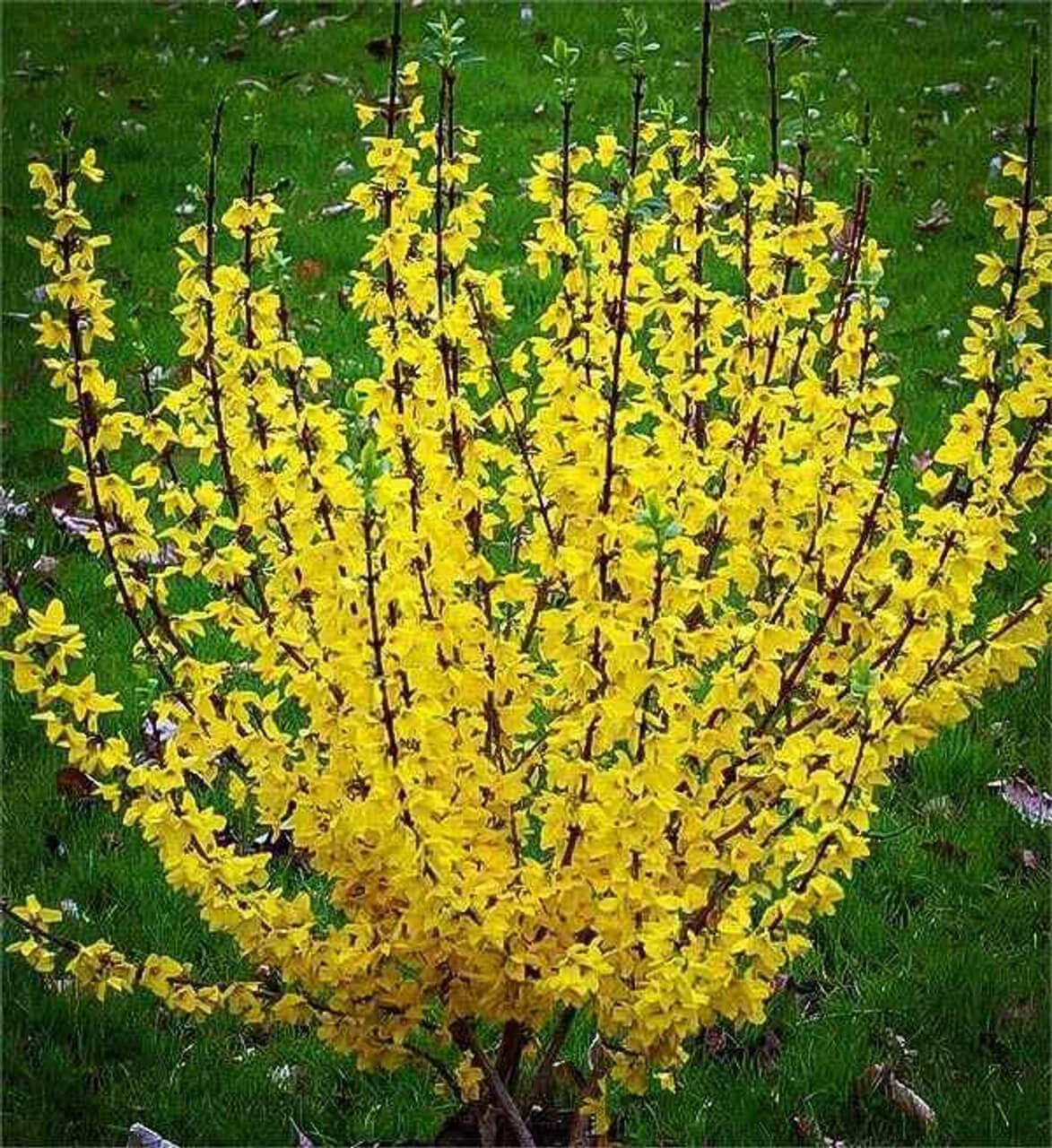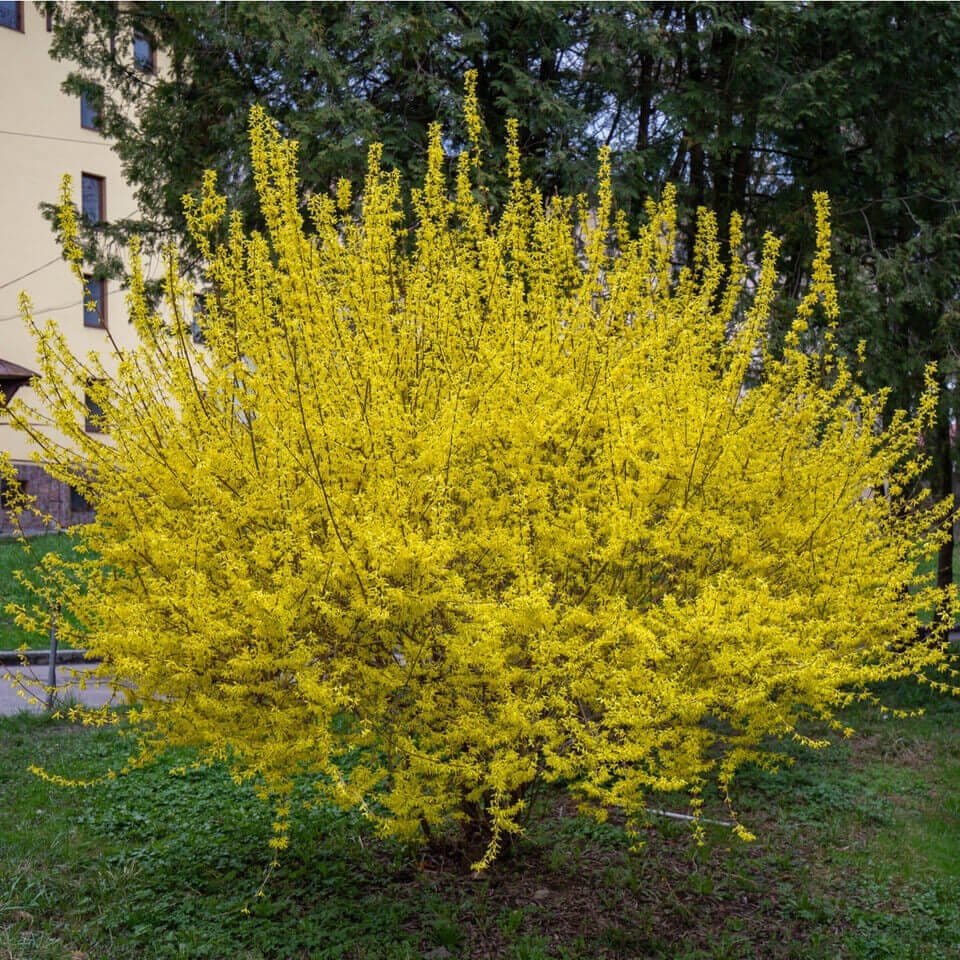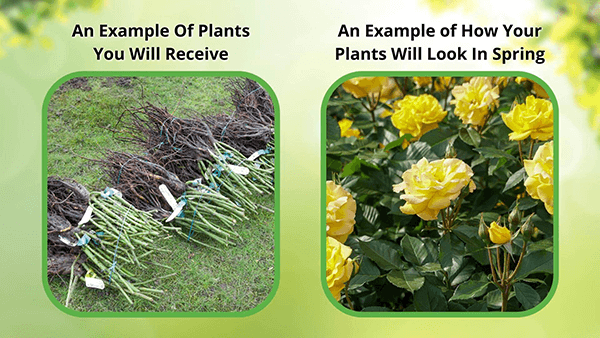Forsythia
Forsythia
| Order | Percentage Discount | ||
|---|---|---|---|
| 2-5 | 25% Off | ||
| 6-10 | 30% Off | ||
| 11-25 | 35% Off | ||
| 26-50 | 45% Off | ||
| 51+ | 65% Off | ||
Couldn't load pickup availability
5-7 Days
Under 10 Feet
Full Sun
5-9
Flowering
Bare-root
LA.
Forsythia - Forsythia Intermedia
Forsythia is a genus of deciduous shrubs belonging to the olive family Oleaceae. The plants are native to eastern Asia, including China, Korea, and Japan. It is widely grown as an ornamental plant for its yellow flowers, which typically bloom in early Spring 2024 before the leaves emerge. The flowers are bell-shaped and occur in clusters along the length of the branches.
Easy To Grow
It is a hardy plant that prefers full sun to partial shade and well-drained soil. It is relatively easy to grow and can tolerate a range of soil types and pH levels. The shrub can be pruned to maintain a desired shape and size, and it is often used in hedges or as a specimen plant in gardens and landscapes.
Forsythia's Traditional Medical Uses
It has been used in traditional medicine for its anti-inflammatory and anti-bacterial properties. It is also used in homeopathy to treat various ailments, including colds, flu, and sore throat. A, it is essential to note that the efficacy and safety of these uses have yet to be fully established by scientific research.
Plant Uses
- Ornamental plant: It is widely grown as an ornamental plant for its bright yellow flowers, which are a welcome sight in early Spring 2024. It can be used as a specimen plant, a hedge, or mass plantings.
- Traditional medicine: Traditional Chinese medicine has been used for centuries to treat different conditions, including fever, inflammation, and infections. It is often combined with other herbs to create formulas for various ailments.
- Homeopathy: It is also used in homeopathy to treat various conditions, including colds, flu, and sore throats. Homeopathic remedies are often combined with other remedies to create personalized treatment plans.
- Culinary: Its flowers make tea and a sweet syrup called omija-cheong in Korea. The tea is said to taste refreshing and is often served chilled.
- Environmental: It is sometimes used in landscaping to prevent erosion on steep slopes. Its extensive root system helps to hold soil in place and prevent it from washing away.
Uses In Your Landscape
Have you considered using this plant in landscaping your yard or garden? With its brilliant yellow flowers, this inexpensive bush affords beauty and privacy for a meager cost. It can be planted on hills and banks to prevent erosion. It won't harm animals if they eat it, and you can eat it yourself. The fruit and flowers have been used in cooking and natural remedies for centuries.
The vines can be used in crafts. Some varieties grow as tall as ten feet. Dwarf types shrubs, only a foot high, can be used as a border hedge. It comes from China and is a member of the olive family. It was once popular to the point of becoming familiar, almost like a weed. It fell out of favor with homeowners because of its size and unruliness unless pruned regularly.
However, the plant's beauty and usefulness are worth a little planning and extra effort. Planted in the right place, it need not be pruned at all. Plant it in rich, well-drained soil. Keep it mulched and well-watered. It needs at least six hours of full sun daily. Could you give it a good soak every two weeks in intense heat and drought?
Prune off the very oldest branches after the spring blossoms have all dropped off before new buds begin forming. In frigid winters, put some shelter around it. If you want to avoid prune, plant it along the edge of your property, where it can be a backdrop for other plants and flowers. Smaller shrubs can be planted along paths and around porches.
This plant put out suckers that take root in the ground. Use these to "clone" new plants. You can also root a green vine in water to which a few drops of fertilizer have been added. Ask the expert at your local nursery how best to care for It in your climate zone.
This Is How Your Plants Will Look upon Delivery
Bloom/Foliage Color
Yellow
Shipping date depends on the date displayed and chosen when you order from the product's page.
We only accept returns on plants verified dead. If you think your plants have died, we offer a 1 year warranty, please use use this File a Claim Link to verify dead plants and start with return warranty process.









